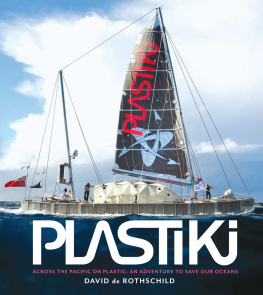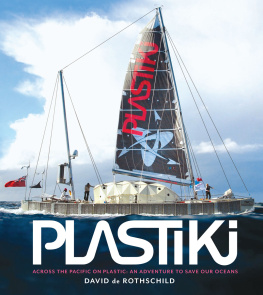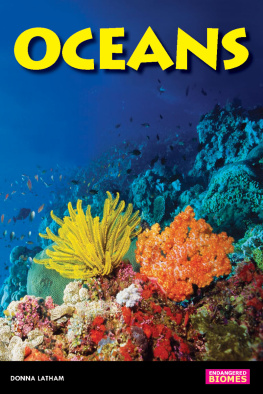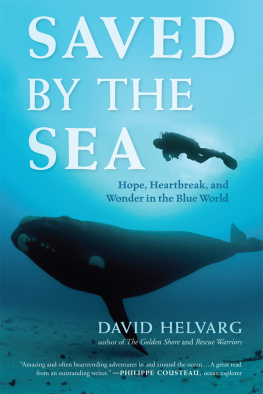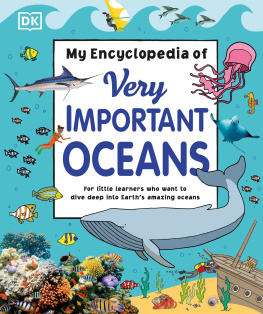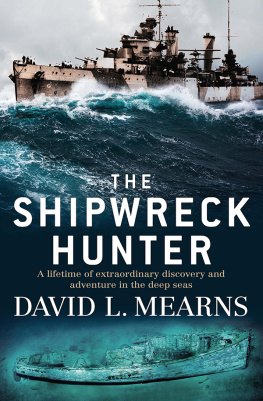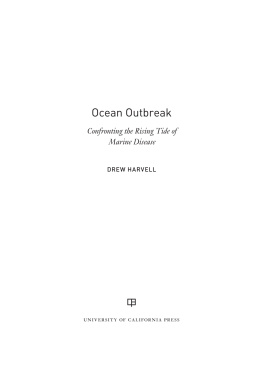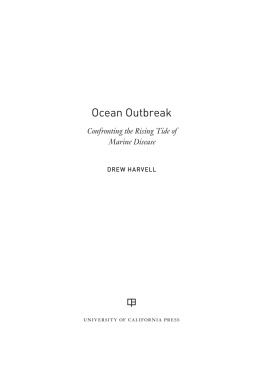

To my family, loved ones, and team, without whom I am nothing. And to those who believed in the dream, took the pledge, and doubted we could ever make it! Sail on.
David de Rothschild
Achim Steiner, UN Under-Secretary General and Executive Director, UN Environment Programme (UNEP)
The genesis and journey of Plastiki and its courageous crew will surely enter the annals of maritime history as one of courage and determination.
Sailing a catamaran 8,000 nautical miles across the Pacific is no mean featbut to do it floating on 12,500 plastic bottles glued together with adhesives derived from sugar and cashew nuts makes the voyage doubly remarkable.
But without a doubt, David de Rothschild and his teams lasting legacy will be the global attention they have put on the menace to the worlds seas and oceans from humanitys currently wasteful ways.
Despite some successes, such as a decline in radioactive materials and persistent organic pollutants in parts of the Atlantic, the marine environment continues to be all too often treated as a dustbin.
Plastiki has highlighted the threats from plastics, perhaps the most visible symbol of this unsustainable past and ongoing present.
The North Pacific gyre concentrates 3.5 million tons of discarded plasticone of five such swirling waste patches in the world.
Plastiki has helped to focus the minds of a global public on the way contemporary economies all too often squander and mismanage finite and fragile natural resources.
There is, however, another side to the Plastiki story: the change possible through human ingenuity, resourcefulness, and ambition to meet challenges head on.
We are delighted to have been involved in this remarkable story. It was, in Davids own words, inspired by a UNEP report on marine litter from 2006living proof that United Nations reports can make a difference.
A staff member was present at the launch in San Francisco and again as the catamaran entered Sydney harbor in triumph with UNEPs blue flag fluttering from the foremast.
I and many other staff members were also there in spirit through the crews blogs, which were often gripping and wittyessential daily reading. Plastiki has delivered a metaphorical message in a bottle to millions upon millions of people.
UNEP will also be there in the future, supporting Plastikis extraordinary legacy, taking forward our ongoing work assessing trends in the marine environment, and assisting governments toward the actions so urgently needed.
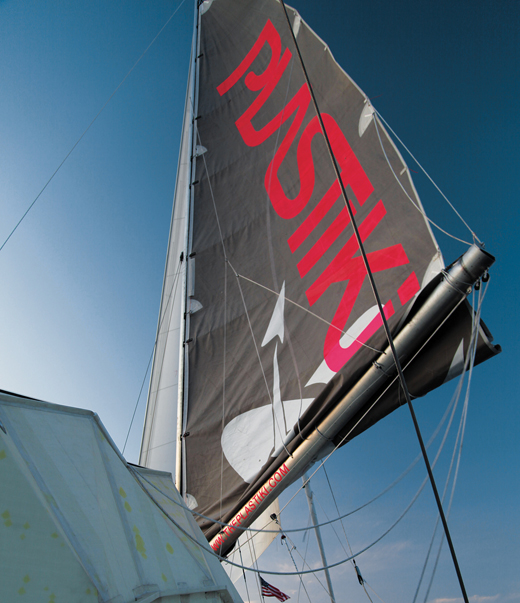
1
THE BIRTH OF A DREAM
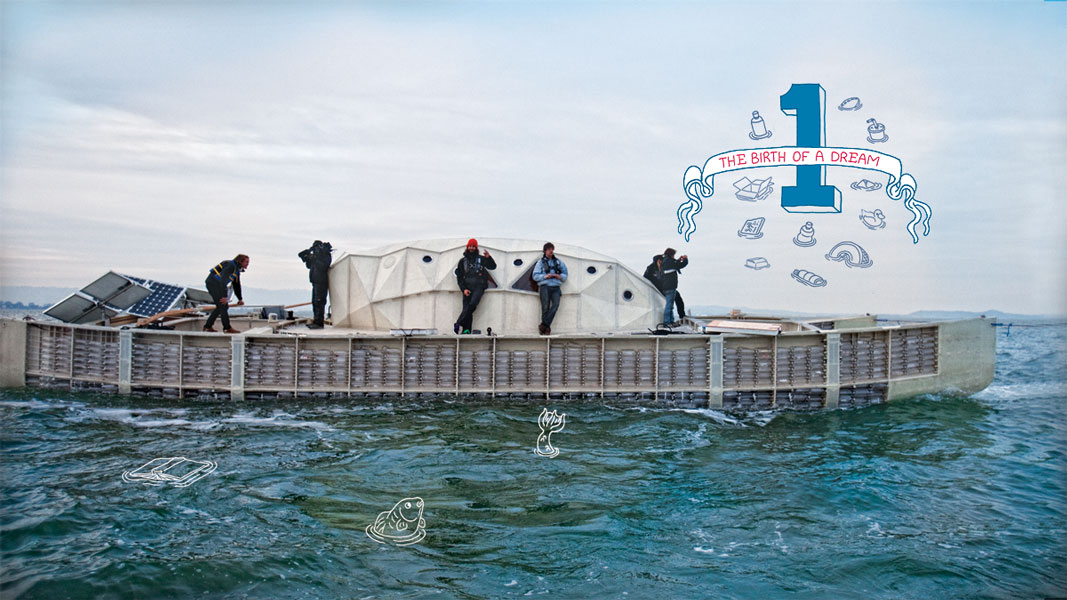
AN EPIPHANYLETS BUILD A BOAT OUT OF PLASTIC BOTTLES AND SAIL ACROSS THE PACIFICBECOMES A MISSION, A MESSAGE, AND AN EXPEDITION.
OUT OF THE DARKNESS, A GIFT. OF SORTS. A BIG WET KISS FROM THE OCEAN PLANTED SQUARELY ON MY CHEEK. AND MY HEAD, AND THE REST OF ME. A TRICKLE OF ICY SEAWATER HAS SOMEHOW WORKED ITS WAY PAST MY FORTRESS OF GORE-TEX, DOWN THE NAPE OF MY NECK, AND EVER SO SKILLFULLY ALONG THE LENGTH OF MY SPINE INTO MY HERETOFORE WARM AND DRY LONG JOHNS.
Im only thirty seconds into a three-hour tour of duty on watch, the tiller and beanbag chair still imprinted with our co-skipper Mr. Ts warmth. Just over a week removed from a grand departure from San Francisco, and nothing yet about life at seathe constant motion, the middle-of-the-night wake ups, the tiger-in-a-cage restlessness of living on a 20-by-60-foot platform with five other peopleresembles comfortable routine.
Did that one get you? asks Mr. T with a grin. Nice! Got off just in time. His silhouette dissolves quickly into the red glow of the cabin. Alone.
Oh, yes! Wet again! I yell into the night, the sound of my voice devoured by the blackness.
Really, Dave? Really? There isnt even a breath of wind or a ripple on the ocean, and you still find a way to get wet. I guess thats the true meaning of a rogue wave. A stream of phosphorescence pulsing and swirling on the port side catches my eye and distracts me from my situation.
And what a situation! What was I thinking in wanting to sail the entire Pacific Ocean? Can I legitimately use the word thinking in conjunction with building a boat from 12,500 plastic bottles and then attempting to sail from San Francisco to Sydney?
My eyes flicker back and forth trying to find some focus in the black void. Our boat is moving along at a speed of less than 2 knots, if you can call that moving. Bobbing is more like it. This is going to be a long journey, I fear.
Hey, Mr. T! Do you think well make Sydney?
Not this year, comes the reply from out of the glowing cabin.
Im sailing the dream: The Plastiki, after two years of hard work, is our best and most sincere expression of the fresh ideas necessary to create a better future. A future that avoids the unsustainable waste and environmental damage of our current way of living. A future that sees waste as a resourcelike the 12,500 reused plastic bottles Im floating on right now.
Yet tonight I cant stop thinking Ive bitten off more than I can chew. Maybe the doubters and naysayers were right. Surely, just sailing across San Francisco Bay would have proven my point. Be careful what you wish for, I always tell others. Maybe I need to start heeding my own advice.
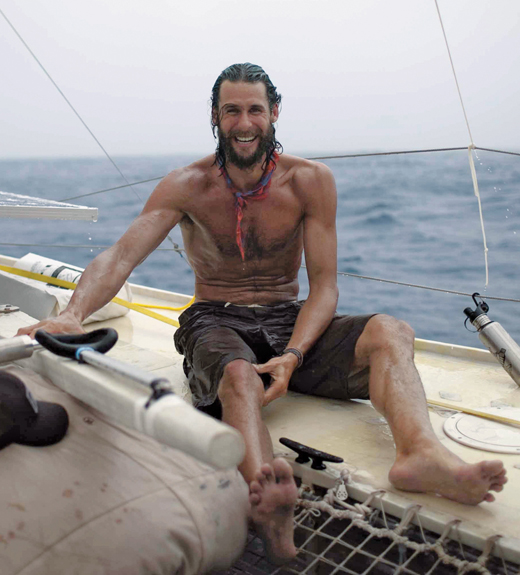
DAVID DE ROTHSCHILD STEERS PLASTIKI THROUGH ONE OF MANY INTENSE PACIFIC DOWNPOURS.
Salt does not course through my veins. I know a jib from a mizzen, and a cleat from a winch, but the extent of my nautical experience prior to Plastiki amounted mostly to sailing Hobie Cats while on family vacations as a kid.
It wasnt salt water but ice that was the medium for my first big adventures. On ski expeditions across Antarctica, Greenland, and the Arctic, I logged hundreds of days and nights on frozen surfaces. While brutally cold and rife with dangers, polar environments in my estimation offer a distinct advantage over the open ocean: They tend not to pitch and roll beneath you. Theyre also impossibly pristine and beautiful and, as were discovering in a warming world, quite fragile.
Plastikis journey began years before the boat ever touched water. In June 2006, Id just returned to London from an expedition to cross over the North Pole from Russia to Canada. It had been humblingrapidly melting pack ice had ended our journey two hundred miles short of Canada. I saw how one of the earths ecosystems was changing right before my eyes. And while thousands of schoolkids around the world had joined the Top of the World journey via the Web, I wanted the expedition to do more than raise awareness. I wanted to make it personal, to make everyone feel connected to the earths fragility.
After any expedition there is some readjustment. Its an anticlimax. Youve been living closely with your teammates in some of the most extreme and inspiring natural environments and then, with the planting of a flag or the last stroke of a paddle, its over. Back in the real world, the thought kept running through my mind: Whats next? What can I do to keep the momentum going?

